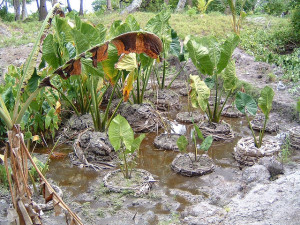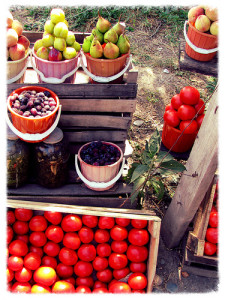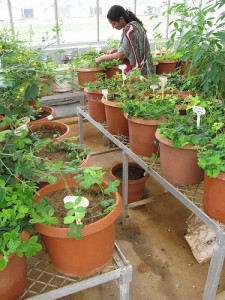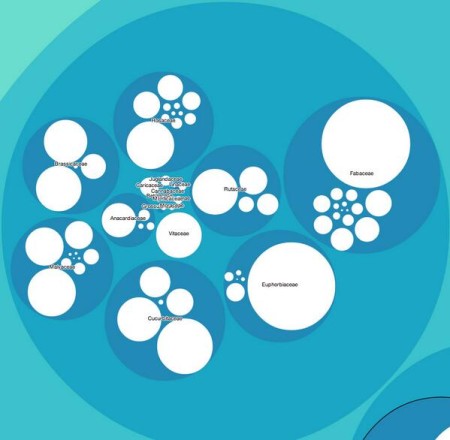 Great to see my old friends at CePaCT, the Centre for Pacific Crops and Trees, get their data online. You remember them, don’t you? They were mentioned in a recent Featured Comment. Not quite sure how long the data’s been up, actually. Maybe quite a while, and I just missed it. Anyway, good to see it. Not least because it gives me a chance to also plug the Directory of plant genetic resources collections in the Pacific, which provides kind of metadata on CePaCT’s collections along with many others in the region. You can download the (big) PDF from the SPC Land Resources Division website, where you can also browse the accession-level data.
Great to see my old friends at CePaCT, the Centre for Pacific Crops and Trees, get their data online. You remember them, don’t you? They were mentioned in a recent Featured Comment. Not quite sure how long the data’s been up, actually. Maybe quite a while, and I just missed it. Anyway, good to see it. Not least because it gives me a chance to also plug the Directory of plant genetic resources collections in the Pacific, which provides kind of metadata on CePaCT’s collections along with many others in the region. You can download the (big) PDF from the SPC Land Resources Division website, where you can also browse the accession-level data.
Infographic on crop production, by family no less
A tweet from Dan Chitwood of the Donald Danforth Plant Science Center really made my day today. He’s written a piece of code which shows production of different crops in 2011 (according to FAOStat) as a very cool infographic where the crops are differently sized circles arranged by botanical family. Here’s a screengrab, but go to the website, and click on a circle and see what happens. I so long to do this for genebank accession numbers…
Brainfood: Domestication syndrome, Açaí cultivation, FIGS galore, Bean FIGS, Polish wheat, Rice groups, Chickpea QTLs, Cuban ag history, Agroforestry domestication, Conservation markets
- Plant domestication versus crop evolution: a conceptual framework for cereals and grain legumes. Only traits showing clear dimorphism between wild and cultivated taxa are really part of Domestication Syndrome. If there’s a continuum, it happened afterwards.
- Reconfiguring Agrobiodiversity in the Amazon Estuary: Market Integration, the Açaí Trade and Smallholders’ Management Practices in Amapá, Brazil. Açaí driving out other crops. Sometimes those underutilized crops should stay that way? Maybe not, as at the same time, homegardens are diversifying.
- Mining germplasm banks for photosynthetic improvement — wheat, rice, potato, legumes and maize. You need maps.
- Do faba bean (Vicia faba L.) accessions from environments with contrasting seasonal moisture availabilities differ in stomatal characteristics and related traits? Yes. Those maps again.
- Can Polish wheat (Triticum polonicum L.) be an interesting gene source for breeding wheat cultivars with increased resistance to Fusarium head blight? What do you think?
- Genetic diversity and classification of Oryza sativa with emphasis on Chinese rice germplasm. Six major groups, not five. We shall see.
- Genetic dissection of drought tolerance in chickpea (Cicer arietinum L.). It could all (or mostly) be down to one genomic region.
- Historical changes in the process of agricultural development in Cuba. I suppose one could say that, in a way, it’s back to the future.
- Developing more productive African agroforestry systems and improving food and nutritional security through tree domestication. Participation, post-production, private-public partnership.
- Market-based mechanisms for biodiversity conservation: a review of existing schemes and an outline for a global mechanism. Need to have a standard unit of measurement, and a mechanism for ensuring a long-term perspective. Can agricultural biodiversity learn from this?
Get cracking on another CWR abstract
 Never rains but it pours. There’s another conference looking for abstracts: it’s the II International Symposium on Wild Relatives of Subtropical and Temperate Fruit and Nut Crops. It will be held April 7-12, 2014 in Baku, Azerbaijan in the conference hall of the Genetic Resources Institute of the National Academy of Sciences, in cooperation with the ISHS.
Never rains but it pours. There’s another conference looking for abstracts: it’s the II International Symposium on Wild Relatives of Subtropical and Temperate Fruit and Nut Crops. It will be held April 7-12, 2014 in Baku, Azerbaijan in the conference hall of the Genetic Resources Institute of the National Academy of Sciences, in cooperation with the ISHS.
Get a move on with those CWR abstracts!
 The deadline for submission of abstracts for the international conference on “Enhanced Genepool Utilization — Capturing wild relative and landrace diversity for crop improvement”, to be held at NIAB Innovation Farm, Cambridge, United Kingdom from 16-20 June 2014, is closing on the 29 January.
The deadline for submission of abstracts for the international conference on “Enhanced Genepool Utilization — Capturing wild relative and landrace diversity for crop improvement”, to be held at NIAB Innovation Farm, Cambridge, United Kingdom from 16-20 June 2014, is closing on the 29 January.
So what are you waiting for?
